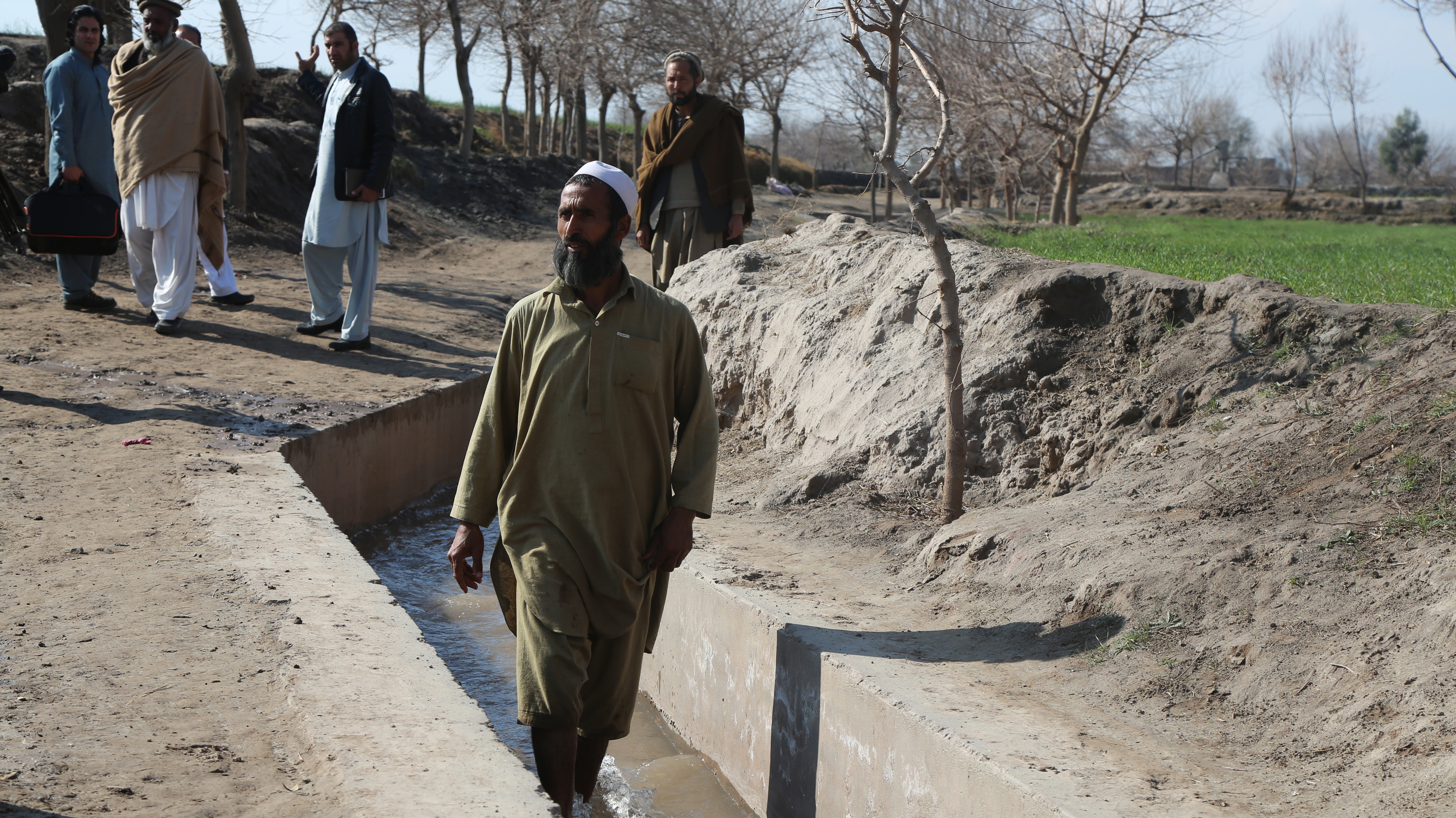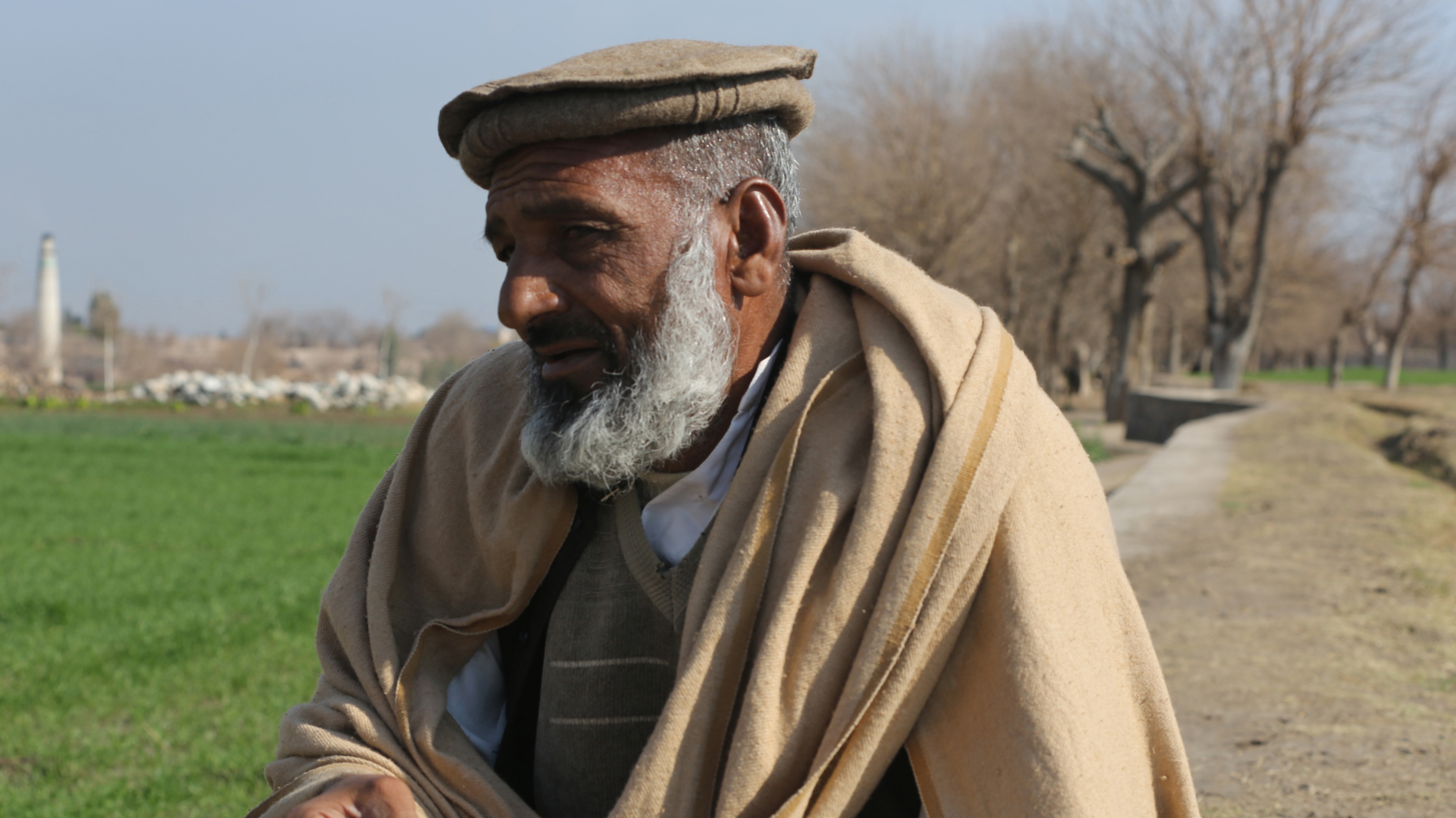BAR SULTANPUR VILLAGE, Nangarhar Province – Two years after improvements were made to the canal in Bar Sultanpur village, near Jalalabad City, the village’s crop yield has nearly doubled and the area of arable land has expanded.
“I own 2 hectares of farming land,” says Gul Agha, 45, farmer and the head of water supply in this village in Surkh Rod district in Nangarhar Province. “Before the canal improvement, I was only able to cultivate about 1.5 hectares, because of water shortages. Now I can cultivate all my land.”
Prior to the canal reconstruction, this village of 10,000 residents had 400 hectares of arable land, which have now increased to 500 hectares. Gul Agha says his crop yield has doubled, from 525 kilograms to more than 1,000.
The canal reconstruction was the result of ‘Dobandi’ and ‘Malakan’, two sub-projects funded by the Ministry of Agriculture, Irrigation and Livestock (MAIL) by a $125,000 grant under the On-Farm Water Management Program (OFWMP). Between August 2012 and January 2013, the sub-projects improved the water canal, which included lining 1,024 meters of canal floor and reconstruction of nearly 800 field turnout. These improved field turnout structures allow farmers to control the canal water and direct it to their farms. Previously, they had to create makeshift dams of mud and sticks to divert the water flow.
“Since the bottom of the canal was unpaved before the project, a great amount of water was wasted, and as a result the water we received was not sufficient for our farms,” Gul Agha recounts. “Most of the villagers here are farmers, and this was damaging for us. For example, I have 14 members in my family, and this land is the only source of income to support them.”


